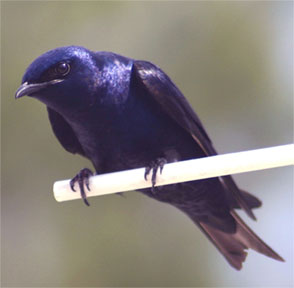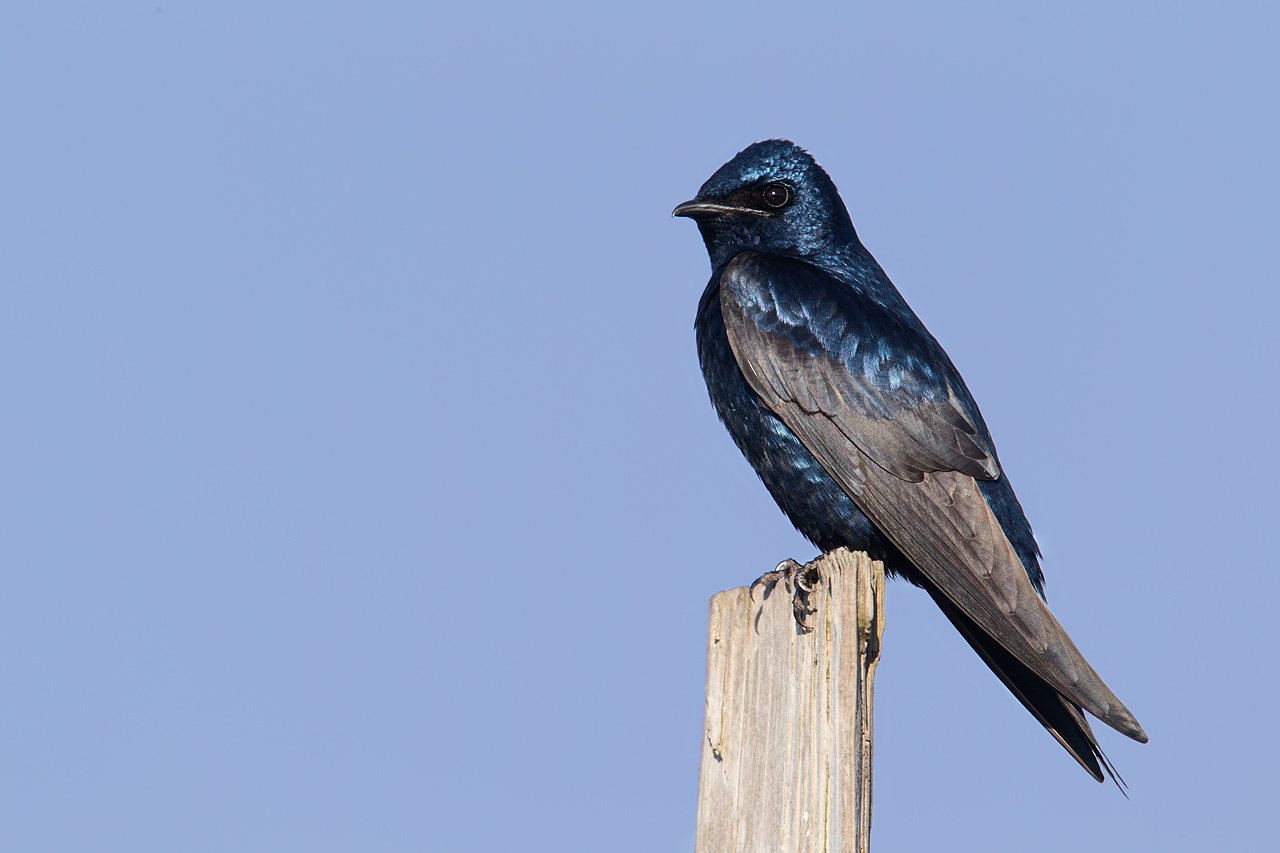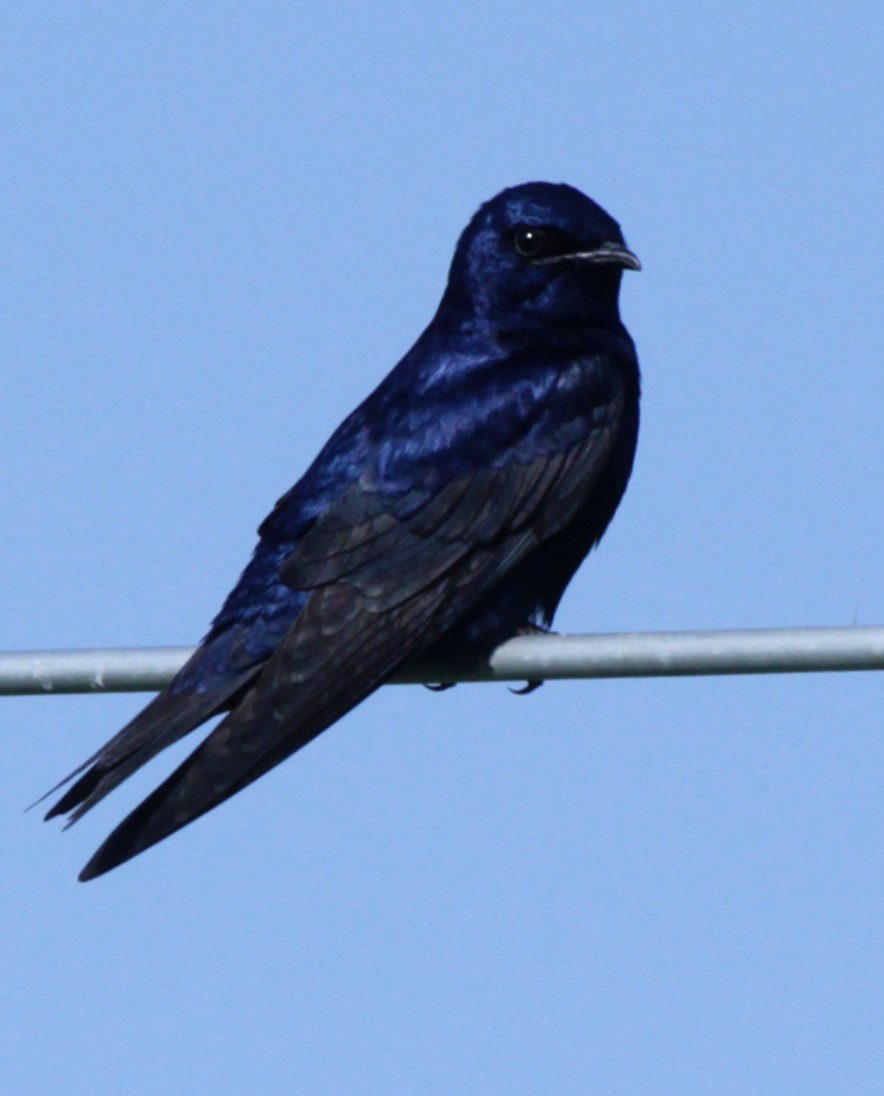
Progne subis
SUBFAMILY
Hirundinae
TAXONOMY
Hirundo subis Linnaeus, 1758.
OTHER COMMON NAMES
French: Hirondelle noire; German: Purpurschwalbe; Spanish:
Golondrina de Iglesias.
PHYSICAL CHARACTERISTICS
7 in (18 cm); 1.7 oz (48 g). The male is colored overall a
glossy, iridescent purple-black, with darker wings, while the female
is brownish with a lighter belly.
DISTRIBUTION
Breeds widely in North America, from southern Canada to
northern Mexico. It migrates to spend the non-breeding season
in central South America.
HABITAT
Inhabits open areas near suitable nesting sites, often near water.
BEHAVIOR
A long distance migrant, it winters in southern parts of its
range (Venezuela to southeastern Brazil). During migration it
often gathers in large flocks. Attracts a mate and defends a nest
site by song and aerial maneuvers. The song is a low-pitched,
bubbling twitter.
FEEDING ECOLOGY AND DIET
Feeds on insects that are caught in flight.
REPRODUCTIVE BIOLOGY
Monogamous. Breeds in colonies in special, apartment-style
nest-boxes with individual compartments, or in a dead, hollow
tree. It may be non-colonial at natural nesting sites. Typically
lays a clutch of four to six eggs. The eggs are incubated by the
female, but both parents feed the young.
CONSERVATION STATUS
Not threatened. A locally abundant species, although declining
over parts of its range. The practice of removing dead trees
with cavities has reduced nesting sites, and introduced species
also compete for nesting cavities.
SIGNIFICANCE TO HUMANS
A familiar and popular bird to many people. An occupied
apartment nest-box is highly prized, because of the lively nature
of the martins and the fact that they eat such large numbers
of irritating insects, such as mosquitoes.
Other popular Animals
Photo Gallery of - Purple martin




 Animalia Life
Animalia Life